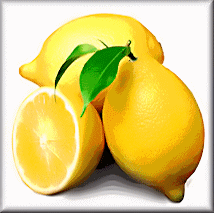
Faced with reduced, diminished or decreasing physical agility (speed, power, strength, and so on), many cease to train altogether.1 Others seek out alternative methods of training.2 Please note that I say "alternative" here with absolutely no hint of settling for second best (although many — myself included — enter this phase in their journey with just that feeling). The fact is that these alternatives often prove themselves far superior to the methods we practiced before. This is because the methods we followed in our early days were, relatively speaking, simpler and easier to assimilate — which is precisely why they are taught first). Lacking a depth of experience that comes only with time, beginning practitioners are capable
of digesting only small amounts of all that the martial arts offer (and believe me, they
offer far more than most of us realize). Still, even at that early level, we enjoy what
we learn, develop skill in it, and perfect that skill to the best of our abilities.
However, because everyone else in our peer group is practicing and playing (or competing)
with basically the same tools, there is little incentive to try anything else. Enter
injury and aging.
Chinese Lemonade: The Traditional Taoist Recipe Although there are literally hundreds of Chinese martial art systems and styles, all of them spring from one of two traditions: Buddhist (more widely recognized as Shaolin) and Taoist. Of the two, the Shaolin family tree has, shall we say, the larger number of distinguishable branches, variants, systems or styles. Divided many times (northern and southern, grappling and striking, and so on), Shaolin arts have numerous recognizable names, including Praying Mantis, White Crane, Hung Gar, Wing Chun, etc. Taoist martial arts, on the other hand, number only three: Xing-yi, Ba-gua, and Taijiquan. Among traditional Taoist martial art practitioners there are those who hold that the best course of study for self-defense is to begin with Xing-yi, intern in Ba-gua, and finally graduate with an advanced degree in Taijiquan. Not everyone subscribes to this style- or art-switching progression, believing that each art has all the necessary elements and that most people end up sticking with their discipline rather than switching with age. But even among those who invest themselves in only one of these arts, there often exists a similar, albeit less obvious, progression within that art. The late Jou Tsung Hwa, a respected and renowned taiji master, believed that taiji is, itself, divided into at least three phases.3 He believed that the three major taiji systems, Chen, Yang, and Wu, are actually best taught in a progression because they build on and complement one another.4 As he saw it, Chen style (the oldest known taiji system and one that bears marked similarities to xing-yi) should be learned first, since it is half yang and half yin (half hard, half soft). Chen should be followed with Yang style (the most popular form and the one that most folks recognize as taiji) which is 75-percent soft. Finally, one should take up Wu style, which is considered the most internal of the three with the smallest, most subtle movements of the major taiji systems. Similar progressions are likely found in many arts (not just Taoist martial arts). The progression (from xing-yi to ba-gua to taiji) runs counter to common Western experience where taiji (by itself) is most often pursued strictly for its health benefits rather than its martial potential. Unfortunately, this leads to some erroneous conclusions about the effectiveness of taiji as a means of self-defense. That aside, there remains something notable about this Taoist progression: it closely parallels and complements the practitioner as he grows, ages, and, simultaneously, matures his practice of the arts. Before we explore this martial progression, allow me this brief disclaimer.
I am not expert in these Taoist arts. My opinions are broad, general, and based
largely on personal observation, available literature, and personal martial art study and
experience. That said, let's begin with a short description of each of art,
highlighting some of their general characteristics.
Xing-yi Ba-gua
Taijiquan Taiji represents the crème de la crème of the Taoist martial arts. As the last step in a progressive training program, it demands still less effort and strength on the part of the practitioner, for the physical conditioning and toughening of xing-yi has paved the way for the technical excellence developed in ba-gua which, itself, now yields to a complete blending with your opponent so perfect that his energy and effort only serve his own self-destructive tendencies, practically causing him to injure himself. (I like to say that taiji meets 1,000 kilos of strength with just 10 grammes.) Natural Progression
The likes of Billy Blanks and his Tae Bo cardio fitness program — strong and in great shape almost despite their years — will likely not pursue different avenues until pain overrules any gain received from their current training methods. But even the seasoned practitioner cannot remain forever in this "middle-age" category, for time marches on. This brings the Taoist practitioner to taijiquan — the grand ultimate fist. In advanced years (those beyond middle age), even hard-style practitioners find their arts'
focus and training methods "softening." Whether by conscious decision or subconscious
evolution, eventually the practitioner's body resists repeated "hard" training. For
example, those who have witnessed the development of tang soo do from its early
years to the present day tell us that the material and methods that were part of the founder's
curriculum have changed with every decade of his life, softening considerably in later
years. In this vein, taiji offers the grand, ultimate destination in the Taoist
progression for the senior, experienced practitioner. Although less virile in
appearance, the taiji master whose training has spanned xing-yi, ba-gua, and taijiquan will
seldom be challenged successfully. He remains a formidable player, largely because his
skill is based on a natural progression and on the years of experience that
such a progression demands.
Lifelong Study I said at the start that seeking "alternative" methods of training is not settling
for second best, and that injury and aging need not be our enemies and can actually be our
allies. I mean that. Believe it or not, at 60+, my technique is much, much
more effective now than it was when I was younger and physically stronger.
Obviously, 40-plus years of dedicated training has a lot to do with this, but, more
importantly, my physical strength no longer hampers my ability to relax through
my movement — and relaxation is the key that unlocks speed and power. Despite not
being as strong as I was decades ago, I am, nevertheless, significantly
faster. I hit harder than ever, but without the effort AND without the damage
to myself. I would never have realized such a level of improvement had my body
remained whole and my strength as it was 30 years ago. The transition I experienced
was also possible because the arts I study are completely amenable to "softer" execution
of their movements and techniques. In fact, beyond beginner level, every technique and
principle of movement in the arts I study actually improves in efficiency when
executed with less strength. And therein lies a problem. How do you train to use
"less strength" in an endeavor that may someday be needed to save your life? Less
strength and relaxed execution seem counterintuitive when when you're learning potentially
life-saving skills.
Fortunately (or unfortunately), the nature of this article requires a perspective that only age and experience bring. Whether you see the necessary perspective as fortunate or unfortunate may foretell how you, as a martial artist, will continue to grow in the arts as your injury toll and chronological age increase and your physical abilities register a corresponding decrease. Even if you are still young and vigorous, this article applies to you, for it is a harbinger of things to come. Heed it, and your knowledge, skill, and pleasure in the arts will continue for many, many years. Skip it, and enjoy to the fullest the few youthful years you have left, for they will be brief. |
|||||||||||||
|
Footnotes:
|
|
©Copyright Bob Orlando, 1999-2016 All rights reserved. |
http://www.OrlandoKuntao.com
E-mail: ron@orlandokuntao.net |
Last update:
Aug. 6, 2016 by Bob Orlando |

